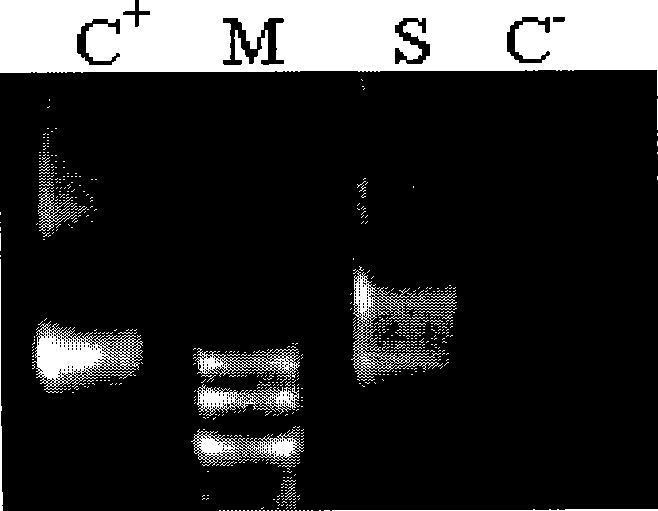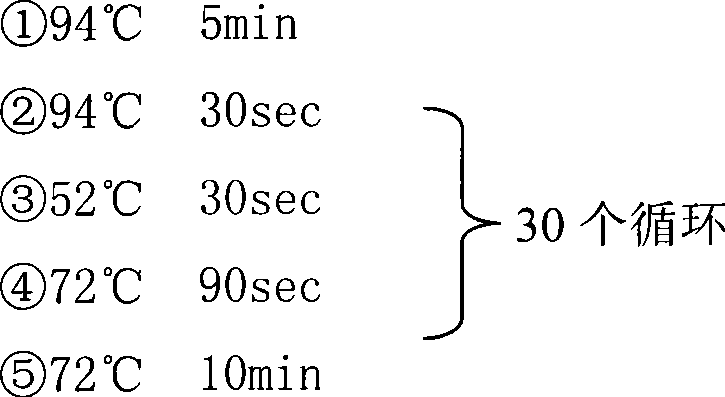Electroporation method of thermophilic thiobacillus
A thermophilic Thiobacillus, electrotransformation technology, applied in bacteria, introduction of foreign genetic material using vectors, recombinant DNA technology, etc., can solve the problems of difficult cell wall breakdown, long growth cycle, and difficult recovery.
- Summary
- Abstract
- Description
- Claims
- Application Information
AI Technical Summary
Problems solved by technology
Method used
Image
Examples
Embodiment 1
[0022] 1. Inoculate E.coli SM10 (pJRD215) (commercially available) in Luria-Bertani medium (LB medium), use streptomycin at a concentration of 100 μg / ml, shake and culture at 200 r / min for 12 to 14 hours, collect cells, and use TaKaRaMiniBEST Plasmid Purification Kit Ver.2.0 kit (product number: DV801A) was used to extract the plasmid, and the concentration of the plasmid was accurately determined to be 112 ng / μL by an ultraviolet spectrophotometer (BioPhotometer plus) from Eppendorf Company.
[0023] 2. The thermophilic Thiobacillus MTH-04 (this laboratory was isolated from the acidic water sample of Tengchong Hot Spring, Yunnan, and the preservation number is CGMCC NO.1742; Liu Ying, Qi Fangjun, Lin Jianqun, etc. A moderately thermophilic and acidophilic strain Isolation and phylogenetic analysis of sulfur-oxidizing bacteria. Acta Microbiology, 2004, 44(3): 382-385) inoculated on Starky-S 0 In liquid medium, shake culture at 120r / min at 39°C for 5.5 days, centrifuge at 12,00...
PUM
| Property | Measurement | Unit |
|---|---|---|
| electrical resistance | aaaaa | aaaaa |
| capacitance | aaaaa | aaaaa |
Abstract
Description
Claims
Application Information
 Login to View More
Login to View More - R&D
- Intellectual Property
- Life Sciences
- Materials
- Tech Scout
- Unparalleled Data Quality
- Higher Quality Content
- 60% Fewer Hallucinations
Browse by: Latest US Patents, China's latest patents, Technical Efficacy Thesaurus, Application Domain, Technology Topic, Popular Technical Reports.
© 2025 PatSnap. All rights reserved.Legal|Privacy policy|Modern Slavery Act Transparency Statement|Sitemap|About US| Contact US: help@patsnap.com



